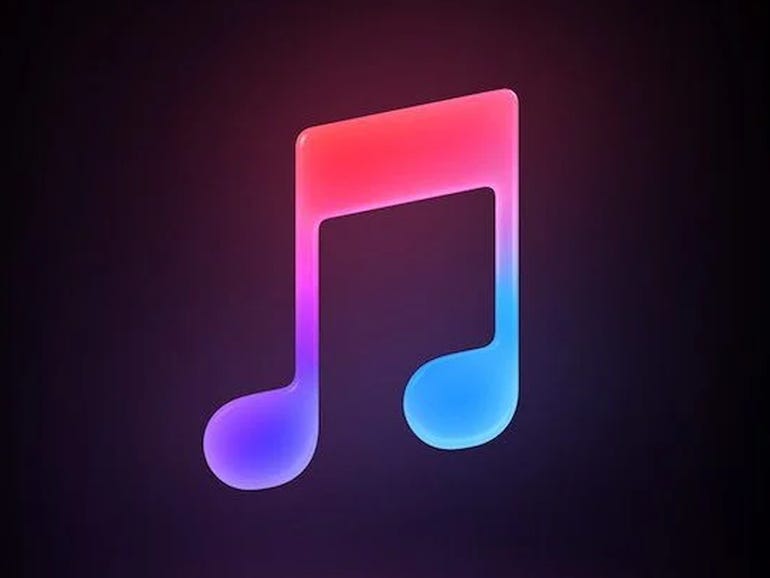Apple, lossless audio, and the state of high-end audio | ZDNet
Apple describes its new audio format, Spatial Audio with support for Dolby Atmos, in hyperbolic terms. According to Apple’s vice president of Apple Music and Beats, Oliver Schusser, “Apple Music is making its biggest advancement ever in sound quality.” Others, notably Tidal and Amazon Music HD, which already support high-resolution audio (hi-res audio) and Dolby Atmos, would beg to disagree. This is really Apple playing catch-up in a market it once dominated thanks to the iPod.
While Apple calls Dolby Atmos “revolutionary,” it’s actually almost a decade old. It’s a surround sound format like its rival DTS:X. As such it’s far more popular as an audio format for movie theaters and high-end home theaters. Nevertheless, in the last few years, more and more music has been remastered and reformatted into the Atmos format.
To fully experience Atmos you need multiple speakers. While Atmos playback will work with a traditional five-speaker-and-subwoofer (5.1) system to make the most of it you need a 7.1.4 Dolby Atmos speaker system with the usual 5:1 speakers, a pair of rear surround channels, and four overhead Dolby Atmos-enabled speakers. Apple, of course, doesn’t offer that.
Instead, Apple Music will do the best it can to play Dolby Atmos tracks on all AirPods and Beats headphones with an H1 or W1 chip, as well as the built-in speakers in the latest versions of iPhone, iPad, and Mac. Despite Apple’s claims that “Listening to a song in Dolby Atmos is like magic. The music comes from all around you and sounds incredible,” the listening experience can only pale compared to a true audiophile music setup.
To do this, Apple uses its own take on Dolby Atmos for Headphones. Devices that use this are still stereo-only, but they simulate Atmos effects using software with any headphones. Before Apple picked it up, the software to enable headphones to play Atmos audio had long been available on Xbox and Windows 10 PC via the Dolby Access app.
At the launch in June, Apple Music subscribers can listen to thousands of songs in Spatial Audio. This music will encompass all genres, including hip-hop, country, Latin, pop, and classical. Apple Music is also working with artists and labels to add new releases and the best catalog tracks, as more artists begin to create music specifically for the Spatial Audio experience.
Some musicians are less than impressed. Rock and roller superstar and audiophile Neil Young said, “The introduction of Atmos seems to be just a distraction from the fact that Apple did not lead, and in fact resisted the move to Hi Rez. Musicians worldwide are not raving about the greatness of Atmos.”
Simultaneously, Apple Music will also make its catalog of more than 75 million songs available in lossless audio. Apple uses ALAC (Apple Lossless Audio Codec) to preserve every single bit of the original audio file.
To start listening to lossless audio, subscribers using the latest version of Apple Music can turn it on via Settings > Music > Audio Quality. Here, they can choose different resolutions for different connections such as cellular, Wi-Fi, or for download. Apple Music’s Lossless tier starts at CD quality, which is 16 bit at 44.1 kHz (kilohertz), and goes up to 24 bit at 48 kHz, and is playable natively on Apple devices. For the true audiophile, Apple Music also offers Hi-Resolution Lossless all the way up to 24 bit at 192 kHz.
This new high-quality Apple Music will be offered at the same streaming price as ordinary Apple Music: $9.99 a month or $14.99 for families. This matches Amazon, which earlier had announced it would start pricing its high-res music at these prices. Spotify is also matching Amazon’s prices for its new high-res offerings. Apple is playing catch-up to Amazon and Tidal, which had shown that even before these price drops people were willing to pay for high-res music.
Of course, with any lossless audio format, there’s a tradeoff: File size. A lossless audio song track typically eats up tens of megabytes of storage space. This can quickly up your device storage or drain your broadband allowance if you stream it over a 4G or 5G network.
Of course, if you’re listening on your smartphone while going back to work on a crowded, noisy bus, you can still use a lossy compression format like MP3. Yes, you sacrifice music fidelity, but without noise-canceling headphones, you still won’t miss a beat. For example, the top MP3 recordings tend to have a bitrate of 320 Kilobits per second (Kbps), while a 24-bit/192kHz file has a bitrate of 9,216 Kbps. Music CDs, by comparison, have a bitrate of 1,411 Kbps.
Let’s do a quick review of the popular digital music formats.
AAC (Advanced Audio Coding): Apple’s MP3s alternative, it’s lossy and compressed but sounds better. Used for iTunes downloads, Apple Music streaming (at 256kbps), and YouTube streaming.
AIFF (Audio Interchange File Format ): Apple’s alternative to WAV, with better metadata support. It’s both lossless and uncompressed.
ALAC (Apple Lossless Audio Code): Apple’s own lossless compression format. It’s been open-source and royalty-free since 2011. Music stored in it also takes up half the space of WAV.
FLAC (Free Lossless Audio Codec): Free, open-source lossless compression format The most popular lossless format, but unsupported by Apple. FLAC files take up about half the size of WAV tracks.
MP3: Popular, older lossy compressed format ensures small file size, but far from the best sound quality. Still around, but no one’s favorite format today.
MQA (Master Quality Authenticated). This is a high resolution, aka better than CD quality, format. It’s used with lossless formats, such as ALAC, FLAC, or WAV. It’s best known for its use by Tidal.
Ogg Vorbis: An open-source, non-proprietary, patent-and-royalty-free, compressed audio format. Quality and size are roughly equivalent to MP3.
WAV (Waveform Audio File Format): The standard CD format. Great sound quality but it’s uncompressed. That means its tracks are very large.
To make the most of any of these you need the right audio equipment. There, Apple does have you covered. Of course, you’ll need newer Apple hardware to make the most of Spatial Audio. The same, though, is true of any format, which supports Dolby Atmos or DTS:X.
You should also keep in mind that your existing music collection can’t make use of new hardware. In addition, just because a song is lossless doesn’t mean it’s a good copy. The mastering quality of the music also matters. For example, Neil Young — first with his Pono music service and now with the Neil Young Archives — has pointed out that even CD masters fall far short of true high-quality audio. That’s because they themselves were mastered at low audio resolutions.
In addition, many people can’t hear the difference between high-quality lossy audio such as 320kbps MP3s and lossless tracks. Want to hear for yourself if it’s worth getting excited about these new developments in audio? Take this NPR audio quiz yourself. You’ll find out for yourself if you can tell the often subtle differences between good music reproduction and Great Music reproduction.
Related Stories:
For all the latest Technology News Click Here
For the latest news and updates, follow us on Google News.


